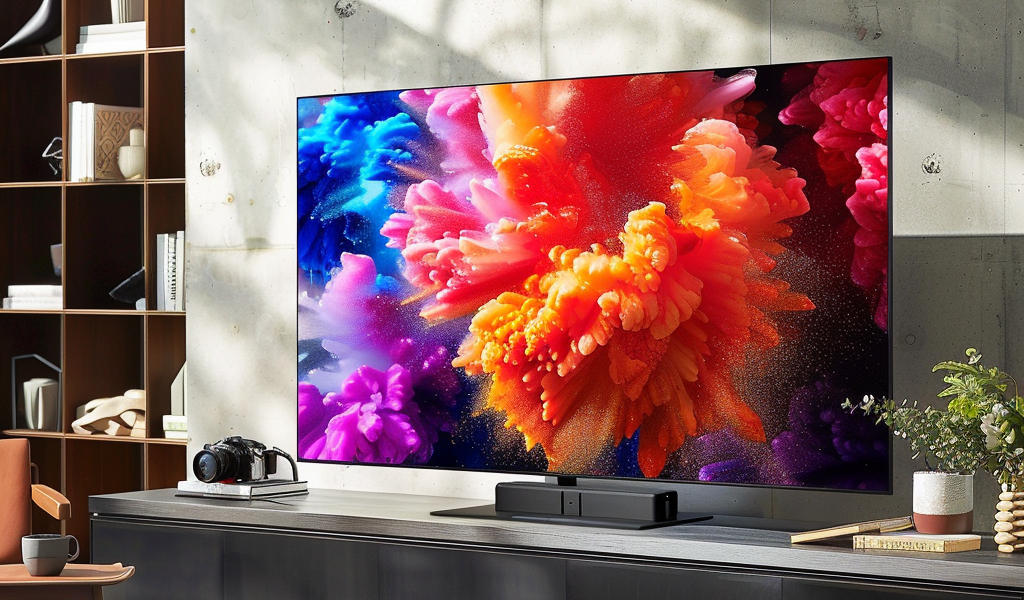Tech Enthusiast Uses 65-Inch 8K TV as Primary Monitor, Sparking Debate on Display Choices
In a striking demonstration of modern technology, Daniel Lawrence Lu has taken the concept of a computer monitor to new heights by utilizing a massive 65-inch 8K LG television as his primary display. This bold choice has sparked conversations about the potential benefits and drawbacks of using such a large screen for computing tasks, particularly in programming and photography.
The primary reason behind Lu’s decision to invest in an 8K display was its remarkable resolution, which significantly enhances the clarity and detail of images. For photographers, the ability to view large images with sharp resolution is invaluable. The high pixel density allows for toolbars and other interface elements to remain legible even at smaller sizes, thereby boosting productivity during photo editing tasks.
One of the standout features of 8K televisions is their support for the D65-P3 color gamut, which is especially advantageous for photo and video editing. While these TVs may not come perfectly calibrated for professional use straight out of the box, users can employ display calibrators to adjust settings according to their specific needs. However, for tasks requiring extreme color accuracy, it is still advisable to use professional monitors that are specifically designed for such purposes.
Lu’s enthusiasm for high-resolution displays is palpable. He recalls being amazed by the quality of a 42-inch display, which ultimately led him to seek out even higher pixel counts. He expresses a desire for a 42-inch 8K display, envisioning a screen that would nearly meet Apple’s renowned ‘retina’ standard. However, he questions the practicality of a 65-inch monitor, pondering whether it might strain the neck and eyes during prolonged use.
Despite the impressive specifications of high-resolution screens, there are some concerns associated with their use. Variances in manufacturing can lead to nonuniformity in displays, resulting in a phenomenon known as the “dirty screen effect.” While this may not pose significant issues for programming tasks, it can be distracting for photography or video consumption. Calibration can help address these concerns, but for color-critical work, professionals are still encouraged to opt for monitors that offer consistent performance.
Lu acknowledges some of the downsides of using a television as a monitor. He notes that color uniformity can be patchy, and there are instances when the display fails to wake up from deep sleep mode when connected to a PC. Additionally, the presence of smart TV menus, popups, and advertisements can detract from the overall user experience. Lu humorously points out that he has yet to encounter a “TV” monitor that doesn’t require keeping the remote control close at hand.
Despite these challenges, Lu remains enthusiastic about his choice. The immersive experience offered by such a large screen is hard to ignore, and he finds it genuinely frustrating that there are currently no plans for smaller 40-inch or 42-inch 8K panels on the market. As technology continues to evolve, the possibilities for display options will undoubtedly expand, making it an exciting time for tech enthusiasts and professionals alike.
This trend of utilizing high-resolution televisions for computing tasks reflects a broader shift in how technology is integrated into daily life. As more people seek out versatile solutions that cater to both entertainment and productivity, the lines between traditional monitors and televisions continue to blur.
For those considering a similar setup, it’s essential to weigh the advantages and disadvantages carefully. While the allure of a large, high-resolution display is undeniable, understanding the specific requirements of your work and how a TV might meet those needs is crucial. Ultimately, as technology advances, the options for high-quality displays will continue to grow, offering users an array of choices tailored to their unique preferences and professional demands.





